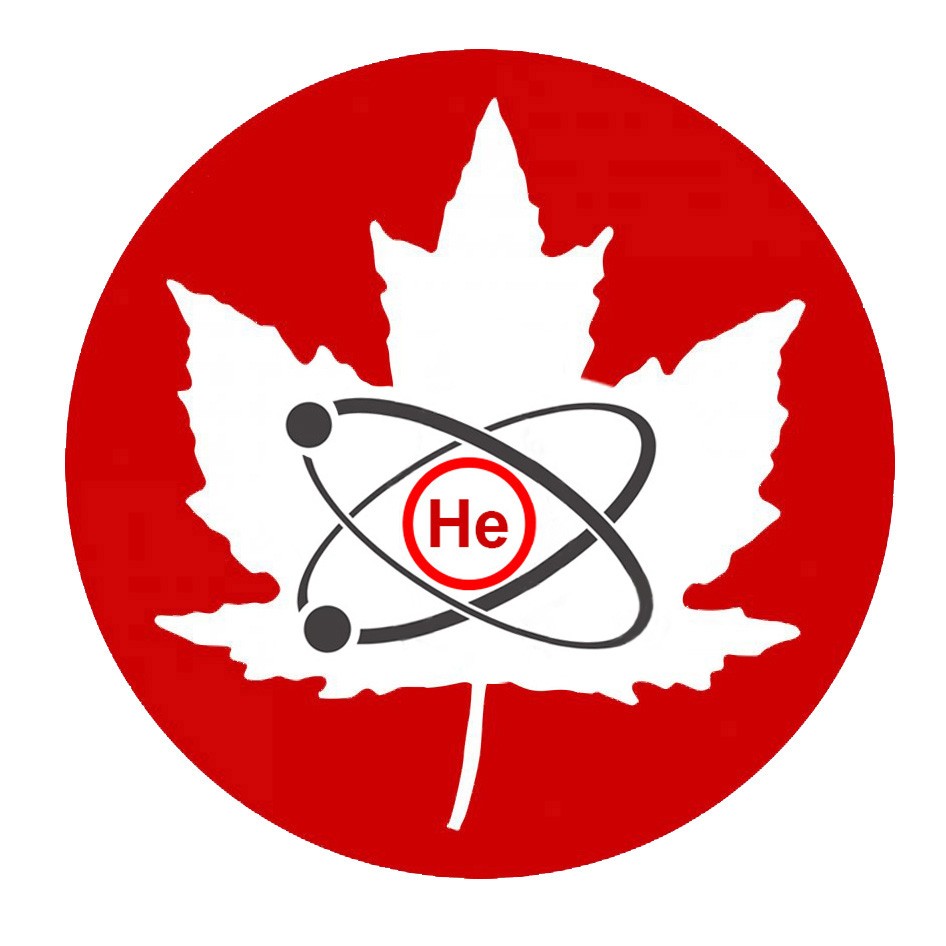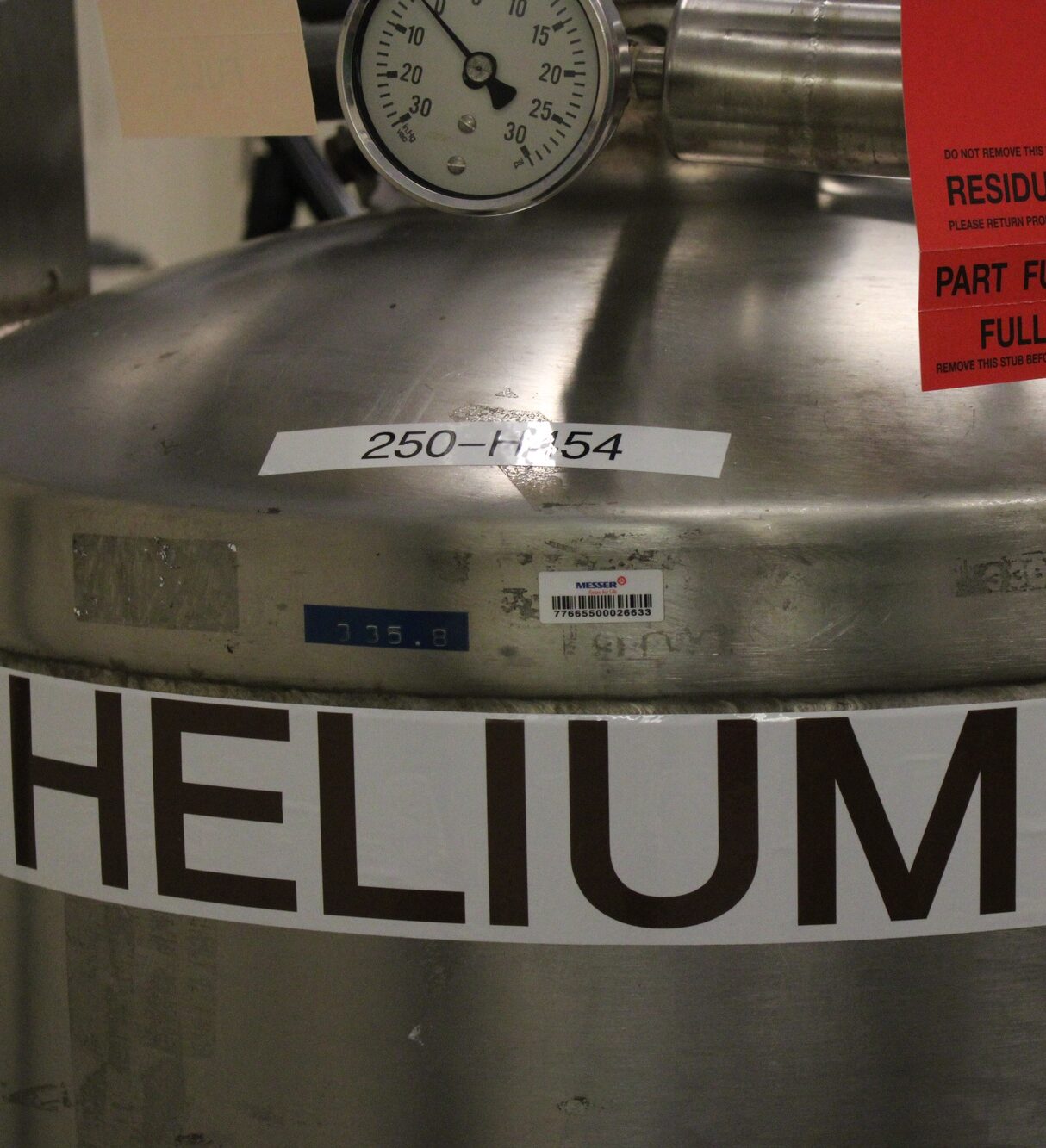
ABOUT US
The Canadian Helium Users Group (CHUG) includes individuals and associations concerned with the helium supply in Canada. We are the managers, technicians and researchers who operate and maintain Nuclear Magnetic Resonance (NMR) spectrometers and Magnetic Resonance Imaging (MRI) instrumentation throughout Canada.
To TopMANDATE
Establishing a Sustainable and Secure Canadian Helium Supply
Summary
• Ongoing liquid helium supply disruptions in Canada have a detrimental impact on Canadian healthcare, scientific research, and Canadian industry.
• We must establish a sustainable, stable, and secure helium (liquid and gas) supply in Canada to overcome these impacts.
• Short and medium-term investments in helium recovery systems would permit the re-use and conservation of helium at a local level.
• Long-term investment in large-scale Canadian helium purification and liquefaction facilities would support a “Made in Canada” solution for helium production, distribution, and self-sustainability.
Recommendations
Development
That the federal government, working in collaboration with provincial governments and industry, expedite the development of a large-scale Canadian helium purification and liquefaction facility to complete a sustainable national helium supply chain.
Funding
That the federal government creates a funding mechanism so that laboratories and institutions can access funds to install helium recovery systems and to create and/or optimize existing local reliquefication systems to promote environmental sustainability.
Urgency
That the federal government adds helium to the list of urgent mineral shortages to be addressed within the federal budget.
To TopWHY HELIUM?
Helium is a precious, non-renewable resource that is a side-product of natural gas production and is used in medical, industrial, and research applications. Its primary use in healthcare settings and research applications is to supercool the large superconducting magnets used in medical magnetic resonance imaging (MRI) scanners and in nuclear magnetic resonance (NMR) spectrometers. MRI and laboratory use of helium account for roughly 26% of total consumption. Helium is also used in industrial welding, semiconductor and fibre optic manufacturing, leak detection, military and space applications, and in low-temperature research that must be carried out at just above absolute zero or minus 268.9 degrees Celsius. There is no replacement for liquid helium. It is such an important resource that the Canadian Government has listed helium as one of the 31 minerals deemed critical for the sustainable economic success of Canada.
Global Helium Supply Chain
The helium industry is very concentrated, with producers primarily located in the United States, Russia, Qatar, and Algeria. The United States Bureau of Land Management had previously supplied up to 40% of the world’s helium via its Federal Helium Reserve, which historically set benchmark prices at public auctions. However, a 1996 Privatization Act and subsequent legislation amended in 2013 resulted in the phased disposal of the reserve, caps on the percentage of helium that could be auctioned off each year, and led to significant increases in the price of helium.
What Do We Use Helium For?
Medical Imaging
In Canada, medical imaging is a vital aspect of the patient care journey, and is at the heart of medical practice, facilitating the early detection of diseases and improving patient outcome. Magnetic resonance imaging (MRI) is a non-invasive medical imaging test that uses powerful magnets and radio waves to produce detailed images of almost every internal structure in the body, including the organs, bones, muscles, and blood vessels. In 2019-2020, more than 2.3 million MRI examinations were conducted using the 378 MRI scanners distributed across Canada, and the demand for medical imaging is expected to increase over time.
Helium is essential to the operation of MRI scanners, as it permits the supercooling of the coils of wires that generate the magnetic field. Without helium, superconducting magnets cannot operate and would be unable to serve the needs of Canadian patients and healthcare providers.
Hospital Intensive Care Units (ICUs)
In patients, heliox (mix of helium and oxygen) breathing reduces the air flow resistance within the bronchial tree and improves pulmonary gas exchange efficiency. Helium is used mixed with oxygen in Intensive Care Units (ICUs) for patients presenting obstructive airway diseases including respiratory distress syndrome, narrow endotracheal tubes, asthma, bronchiolitis, pneumonia, bronchiolitis, croup, pulmonary rehabilitation as well as acute vocal cord disfunction, nebulized drug delivery, adjuvant for conscious sedation, awake intubation, and much more. Heliox is also used for patients presenting acute lung injury and acute exacerbation of chronic obstructive pulmonary disease.
NMR Research
Nuclear magnetic resonance (NMR) spectroscopy provides exquisitely sensitive chemical information of a molecule sample with atomic scale resolution. NMR spectroscopy is critical in life science, chemistry, engineering, and physics research programs. NMR spectroscopy is vitally important for many diverse applications including: (1) drug discovery (2) metabolomics – complex mixtures of metabolism products are analyzed to determine the extent of diseases; (3) protein structure and dynamics – to learn about structure and function in healthy systems and disease; and (4) materials research such as batteries, polymers, clays, etc., to understand how to improve technologies. In addition to providing detailed structural information of a sample, NMR spectroscopy is responsive to real-time changes in a sample, making it a uniquely capable technique for studying kinetics and dynamical processes in a sample.
A recent survey conducted by the Canadian Helium Users Group (CHUG) distributed to 70 research facilities with more than 235 NMR magnets found that 72% of facilities had difficulty procuring liquid helium within the last nine months. In addition to being placed on “allocation”, meaning that they will receive less helium than they require, many labs have been seeing unscheduled price increases of between 25 to as much as 400%. As well two sites are considering decommissioning large magnets, and 10 are considering decommissioning smaller magnets due to the current helium supply crisis.
Of the sites that reported, 5195 highly qualified personnel (HQP), trainees including undergraduate students, graduate students, and post-doctoral fellows, rely on NMR data to carry out their research. These researchers could not continue with their work if spectrometers in their institutions’ NMR facilities were closed down due to difficulty obtaining liquid helium. The Canadian government supports NMR and MRI research in the sciences and social sciences via Tri-Council (CIHR, NSERC, SSHRC) and other research grants totalling millions of dollars.
To Top


